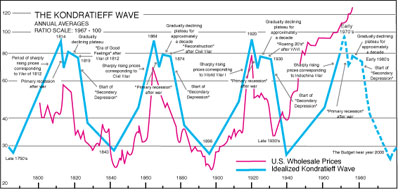CYBERHYPE VI: The Darkside of the Wave
In a bust economy can Keynesian demand management save us from the latest cycle of Schumpeterian creative destruction? In this issue’s ‘Cyberhype’, CCRU assesses the contenders’ credentials
‘Industrial mutation – if I may use the biological term – incessantly revolutionizes the economic structure from within, incessantly destroying the old one, incessantly creating a new one. This process of Creative Destruction is the essential fact about capitalism.’ – Joseph Schumpeter, Capitalism, Socialism and Democracy.
Following the cyclical exhaustion of the first cyberspace boom, artificial winter set in throughout the capitalist world. Investors’ ‘animal spirits’ retreat and the shadows of the Yin World stir. As the economy slithers in the abyss the dusty grimoires of modernity’s arch-magician J.M. Keynes are once again being perused for policy conjurations to exorcise the darkside of the wave.
Conceived amidst the traumatic economic upheavals of the ’20s and ’30s, Keynesianism is an art of governmental jugglery designed to levitate economic demand through the power of belief. It is structured as an elaborate confidence trick, and all rigorous economic analysis exposes its policy prescriptions as sheer illusionism. The ultimate ambition is a vanishing act, aimed at disguising capitalism’s intrinsic cyclicity. The typical outcome is a sleazy pork-fest, as pay-offs to special interests ensure the degeneration of the invisible hand into a hermetic sociology of secret handshakes.
The primary target of Keynesian High-Magic is the abominable Cyberhype sorcery of ‘creative destruction’ – which manifests through Schumpeter’s ‘wave-like movement of alternating periods of prosperity and depression [that] has pervaded economic life ever since the capitalist era began …’
Social innovation requires that existing arrangements and hierarchies are thrown into disorder and shattered, making the downturn no less functional than the boom. The dynamic of capitalism eventually trashes each and every ‘capitalist system’ that manages to constitute itself, plunging its ever-expanded sphere of influence into the episodic tumult of creative destruction, where it converts established structures into resources for metamorphosis. That is why the cyclical trough typically triggers a range of ‘gothic affects’ related to vampiric contagion and possession by alien forces.
In the depths of the economic darkside the world becomes a puppet for things yet to come. It is here that future-positive ‘disruptive technologies’ are spawned, where labour, capital, and markets are cheap to acquire. Take-overs of every kind are easier on the darkside.
If the Keynesian magus is a policy-maker and overseer, the Schumpeterian sorcerer is an entrepreneur, adept in the shadowy arts of recombination. Enterprise invokes an abstract power of productive synthesis by channelling the latest and most intensely virtualised modalities of credit-capital into the initiation of experimental business activities. The entrepreneur is a carrier, avatar of the intrinsically transient ‘social function of innovation,’ and cannot be defined either as a specific person or member of a distinct class. Enterprise is an anomaly from the darkside, populating the future with its ‘swarming of new combinations.’
Each wave arises at the edges where the equilibrium state is most unformed. Only the paranoid survive, says Intel’s (Schumpeterian) Andy Grove, because there is always something stirring on the margins that threatens to devastate the existing order of economic interests. Because the old core is relatively insulated from information, it is desensitised to the emergence of its most dangerous competitors: the new products, production processes, markets, supply sources, and business organisations that flow in subliminally from the periphery.
The high-magicians of demand management try to prevent the new economy from sliding into darkness, but it is already too late for that. Even as the shadows thicken something unimaginable is arriving from the edges of the world.

The CCRU (Cybernetic Culture Research Unit) <it AT ccru.demon.co.uk> is an autonomous collective of hyperculture researchers involved in the production of pulp theory/fiction hybrids [http://www.ccru.demon.co.uk]
Mute Books Orders
For Mute Books distribution contact Anagram Books
contact@anagrambooks.com
For online purchases visit anagrambooks.com







